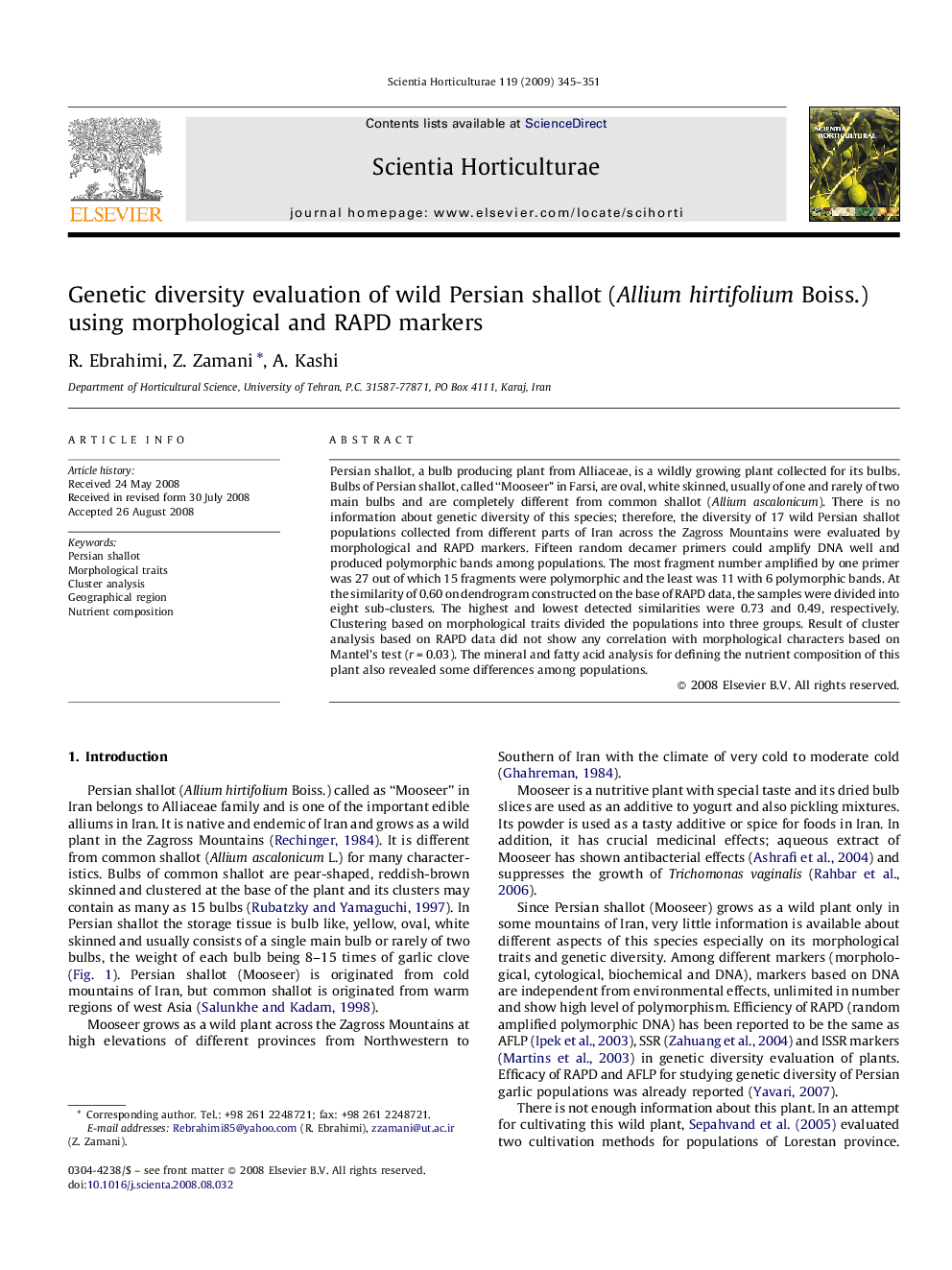| کد مقاله | کد نشریه | سال انتشار | مقاله انگلیسی | نسخه تمام متن |
|---|---|---|---|---|
| 4569212 | 1331328 | 2009 | 7 صفحه PDF | دانلود رایگان |
عنوان انگلیسی مقاله ISI
Genetic diversity evaluation of wild Persian shallot (Allium hirtifolium Boiss.) using morphological and RAPD markers
دانلود مقاله + سفارش ترجمه
دانلود مقاله ISI انگلیسی
رایگان برای ایرانیان
کلمات کلیدی
موضوعات مرتبط
علوم زیستی و بیوفناوری
علوم کشاورزی و بیولوژیک
دانش باغداری
پیش نمایش صفحه اول مقاله

چکیده انگلیسی
Persian shallot, a bulb producing plant from Alliaceae, is a wildly growing plant collected for its bulbs. Bulbs of Persian shallot, called “Mooseer” in Farsi, are oval, white skinned, usually of one and rarely of two main bulbs and are completely different from common shallot (Allium ascalonicum). There is no information about genetic diversity of this species; therefore, the diversity of 17 wild Persian shallot populations collected from different parts of Iran across the Zagross Mountains were evaluated by morphological and RAPD markers. Fifteen random decamer primers could amplify DNA well and produced polymorphic bands among populations. The most fragment number amplified by one primer was 27 out of which 15 fragments were polymorphic and the least was 11 with 6 polymorphic bands. At the similarity of 0.60 on dendrogram constructed on the base of RAPD data, the samples were divided into eight sub-clusters. The highest and lowest detected similarities were 0.73 and 0.49, respectively. Clustering based on morphological traits divided the populations into three groups. Result of cluster analysis based on RAPD data did not show any correlation with morphological characters based on Mantel's test (r = 0.03). The mineral and fatty acid analysis for defining the nutrient composition of this plant also revealed some differences among populations.
ناشر
Database: Elsevier - ScienceDirect (ساینس دایرکت)
Journal: Scientia Horticulturae - Volume 119, Issue 4, 17 February 2009, Pages 345-351
Journal: Scientia Horticulturae - Volume 119, Issue 4, 17 February 2009, Pages 345-351
نویسندگان
R. Ebrahimi, Z. Zamani, A. Kashi,